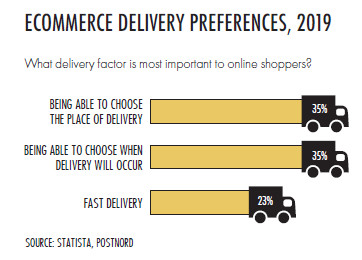The German customer: Germany 2020 Ecommerce Country Report insights
Written by
Kinga EdwardsPublished on

The German customer is very demanding, aware, economical and prefers local products. The company must really try to fight for the hearts, minds and wallets of the German client.
The availability of products and services is huge. Without a perfect knowledge of the behaviour and preferences of the target group, it’s a shame to budget for unsuccessful campaigns targeted at everyone, i.e. nobody.
What is worth knowing about the German customer and what requirements are to meet his needs? See our insights from the Germany 2020: Ecommerce Country Report report (you’ll find a link to the full report below the article).
The German customer is of all ages
What age is the German client? It turns out that there is a small percentage difference between the four main age groups. Although the strongest area is the 45-54 group, the other groups also record over 20%.
German customers are open to shopping, both online and offline. Although the youngest group does not yet have such an impact on sales dynamics, it is not worth underestimating.
The German customer is demanding in online shopping

According to the data contained in the report, German customers are very demanding and do thorough research before shopping online. As many as 71% of them check all available information about a given product by clicking “buy”.
German consumers pay close attention to product descriptions, payment options and delivery.
Is it surprising that over 70% of consumers conduct research on the Internet before buying a product?
Definitely not, given the fact that Germans love online shopping, but they may also be a bit afraid of them. That is why online store owners should remember that the descriptions in their store should be as refined as possible.
If such information is unavailable or insufficient, then … customer reviews, left by other customers who have already purchased such a product and share opinions about it (often also talking about customer service) are helpful.
Other interesting statistics? Many German customers use mobile devices for online shopping, which is important information for retailers. Having a website in the RWD model is a must already in 2020.
The German customer likes to pay online

The German customer focuses on convenience and pays by card, via PayPal or makes a transfer. Digital payments are becoming increasingly popular in all ages.
The German customer wants to familiarize himself with the product, add it to the shopping cart, and then complete the purchase. Finalization involves payment – the faster the customer can use the payment option, the better for conversion.
The German customer does not return products
According to the data in the report, as many as 53% of customers in Germany do not return any online purchases. The only bigger returns concern the fashion industry – here 32% of respondents admitted to returning clothes, while 17% indicated the return of shoes.
Low returns can be due to careful research and checking of all information before finalizing the purchase. This means that German customers are unlikely to return too many products purchased online.
The German customer appreciates the delivery options
Flexibility in delivery options is very important for German customers. According to the report, 35% of them want to be able to choose both the place of receipt of the package and the date of receipt.
These are times full of challenges for logistics and couriers! In addition, a German customer wants to be able to receive his package as soon as possible. Fast delivery counts for 23% of German customers.

The German customer likes to compare
Germany likes to compare offers and look for discounts. Depending on the needs, they are guided only by the price criterion (in the case of everyday items) or … do not take it into account at all, focusing on quality, prestige or after-sales customer service when buying other types of consumer goods. The German customer does not negotiate the price, asks a lot of questions about the product.
He wants to know what he is buying and the more we know about a given article, the more we convince him of the price for which we want to sell it. A German customer will return to the store if well served, even if the product was more expensive. He prefers to pay more but is sure that he will be happy with his purchase.
The German customer often buys online

According to the report, as many as 89% of German customers make online purchases at least once a month, and as many as 29% of them do it once a week. Only 2% of German customers shop online once every six months.
The German customer has his language
Although English is very common in business in almost every Western European country, in Germany the business model in which communication is conducted in German still prevails. Germans use less and less complex sentences and try to simplify their syntax as much as possible, they care about the clarity of the message.
To wrap up
To do business in this country, we need to delve into its culture, customs and expectations for the products and services it purchases – and this is what a German customer requires.
The personalization of customer service and caring for environmental issues are examples of activities that are a must when serving a German customer.
Interested in seeing more insights and the full report?
Here you can find the full report, free to download for retailers (when they use their work email address at the checkout) or €229 for non-retailers.


